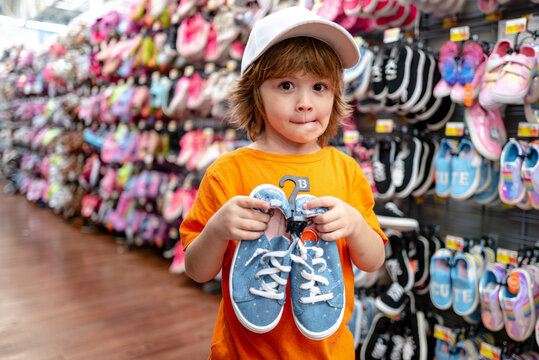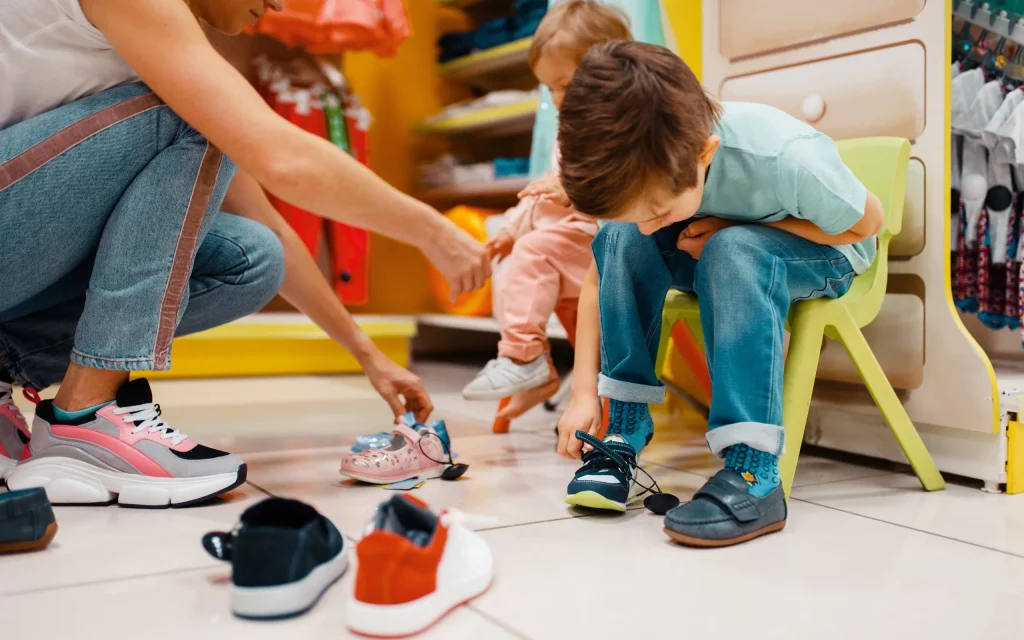
The Ultimate Guide to Buying the Right Shoes for Your Kids
Find out all you need to know about choosing the right shoes for your kids with the help of our detailed guide.
It is your first responsibility as a parent to make sure your child is safe and comfortable. Choosing appropriate shoes for their developing feet is an often-overlooked part of this. Blisters, ingrown toenails, foot abnormalities, and posture problems are just some of the many concerns that can arise from shoes that don’t fit properly. That’s why you should take your time and be thoughtful when you buy shoes for your Kids. Find out all you need to know about choosing the right shoes for your kids with the help of our detailed guide.
Why Proper Shoes Fit Matters

The importance of a proper fit for your child’s development will be discussed before we get into the specifics of shoe buying.
- Healthy Foot Growth: From infancy through early childhood, a child’s feet undergo continuous growth and shape changes. Bunions, hammertoes, and other foot abnormalities can develop when shoes are either excessively tight or excessively loose, which hinders normal foot growth.
- Proper Posture and Alignment: A child’s feet, ankles, and legs need shoes that fit properly so they can stand up straight and maintain good posture. Good alignment and posture are cornerstones of healthy growth, and this aids in fostering both.
- Comfort and Activity: Kids love to run, jump, and explore, and wearing shoes that are too tight or too narrow might limit their mobility. Your child will be more likely to have an active lifestyle if they have shoes that fit them properly.
- Injury Prevention: Shoes that are either too large or too tiny might heighten the likelihood of slips, falls, and other mishaps. Your child’s feet will be better protected from harm if they wear shoes that fit properly.
Now that we know how important it is for shoes to fit properly, we can get into the process of locating the right pair for your child.
Step 1: Get Their Feet Measured
Having a professional measure your child’s feet is the first and most important thing to do while shopping for shoes. It is crucial to take a child’s foot measurement whenever you go shoe shopping because their feet can develop so rapidly.
A Brannock device or other specialist tools are typically available at respectable shoe stores, and the qualified personnel there can take precise measurements of your child’s feet. No amount of guesswork or general sizing standards can account for the individuality of each child’s foot.
Step 2: Shop at the Right Time
During the late afternoon or early evening is when shoe shopping is at its finest. Since children’s feet naturally swell during the day, this is the time when they are at their biggest. If you buy shoes first thing in the morning or after sitting for long periods of time, you can end up with shoes that are too tight for your feet.
Step 3: Look for Proper Fit and Features

Take careful note of the following details when you try on shoes:
- Toe Room: Make sure your child’s shoes have enough room for their longest toes, which is around the breadth of a thumb. As a result, your toes won’t get squished and miserable as they develop.
- Heel Fit: Your child’s shoes should have a snug heel fit that doesn’t slip or rub against the back of their foot.
- Width: Make sure the shoes don’t pinch or squeeze your child’s foot as they stand with their ball of foot in them.
- Flexibility: Choose shoes with flexible soles so your child’s feet may move freely in them.
- Breathability: To avoid stinky, sweaty feet, look for shoes crafted from materials that enable air to circulate, such as mesh or leather.
- Support and Cushioning: Your child’s level of activity will determine the best shoes for him or her in terms of arch support, cushioning, and shock absorption.
Step 4: Involve Your Child
Even if you have the last say, it’s important to let your child help you choose shoes. Permit them to try on a variety of colors and designs, and get their feedback on the shoes’ comfort. This helps them feel safe and secure while simultaneously fostering their sense of autonomy.
Step 5: Break in New Shoes Gradually
You shouldn’t anticipate your little one to start wearing them nonstop the moment you find the right pair. Your child’s feet will need time to adapt to new shoes so they don’t hurt or blister. As the shoes break in and feel more comfortable, you can wear them for longer periods of time.
Frequently Asked Questions (FAQ)
Q: How often should I replace my child’s shoes?
Changing a child’s shoes every four to six months is a good rule of thumb, but you should replace them more frequently if you see wear and tear or if their feet have grown a lot.
Q: Can hand-me-down shoes be worn?
You can save money by reusing shoes from other children, but before you do, make sure the shoes are in good shape and the right size for your child’s feet. Used or poorly fitting hand-me-downs are more likely to hurt than help.
Q: What about indoor and outdoor shoes?
The usual consensus is that you should have a pair of shoes for the house and another for the outside. Walking around in muddy, filthy, and otherwise unsanitary outdoor shoes is no picnic.
Q: Should I buy shoes a size bigger for growth?
Buying shoes a size or two bigger than your child’s real size could be counterproductive, despite the fact that it’s tempting to do so. Foot problems, including tripping and falling, can result from wearing shoes that are too large. Maintain a steady supply of well-fitting shoes for your youngster and switch them out as they develop.
Final Thoughts
Investing in children’s footwear ensures a long-term investment in their well-being, comfort, and growth. You can make sure your little one’s feet are safe and supported as they develop and discover the world by following these rules and putting an emphasis on a good fit. Taking extra precautions now can greatly reduce the likelihood of foot and posture issues in the future, so it’s best to consult an expert if you are worried about sizing or fit.
You Can Also Read Here The Cowboy Hat Styles You Need to Know
